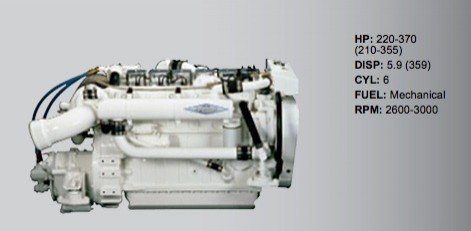- Joined
- Oct 1, 2007
- Messages
- 7,331
- Location
- Texas
- Vessel Name
- Floatsome & Jetsome
- Vessel Make
- Meridian 411
I am a perpetual surfer of Yachtworld. *I am on there every day looking for THE boat. *And we are getting closer to being "back in the market". *I have nothing against Cummins engines. *Obvisously they enjoy a decent reputation. *My biggest issue is this....
"As of March 09, she had her starboard engine was hauled out rebuilt with limited warranty,Port engine with 900 lightly used hours..."
I see that VERY often with Cummins powered boats. *Almost always the other engine has less than 2000 hours on it and if we assume that they use both engines at the same time, are we to assume a Cummins 6BT is only good for about 2000 hours??? *I would never avoid a boat with Cummins in them but if I did buy one, this would always be lingering in the back of my head. *I also like the extra room they give you in the engine room versus the main competitor of that era....the Cat 3208. *But I see 3208s with 3 and 4000 hours on them all the time. *I realize there are many different versions of this engine(and the 3208) but it just gives me pause. *Anyway....discuss....
PS....I do find the cut and paste quote kinda humorous. *I guess they treated the other engine poorly and treated the other one with kid gloves.....hahaha
"As of March 09, she had her starboard engine was hauled out rebuilt with limited warranty,Port engine with 900 lightly used hours..."
I see that VERY often with Cummins powered boats. *Almost always the other engine has less than 2000 hours on it and if we assume that they use both engines at the same time, are we to assume a Cummins 6BT is only good for about 2000 hours??? *I would never avoid a boat with Cummins in them but if I did buy one, this would always be lingering in the back of my head. *I also like the extra room they give you in the engine room versus the main competitor of that era....the Cat 3208. *But I see 3208s with 3 and 4000 hours on them all the time. *I realize there are many different versions of this engine(and the 3208) but it just gives me pause. *Anyway....discuss....
PS....I do find the cut and paste quote kinda humorous. *I guess they treated the other engine poorly and treated the other one with kid gloves.....hahaha

